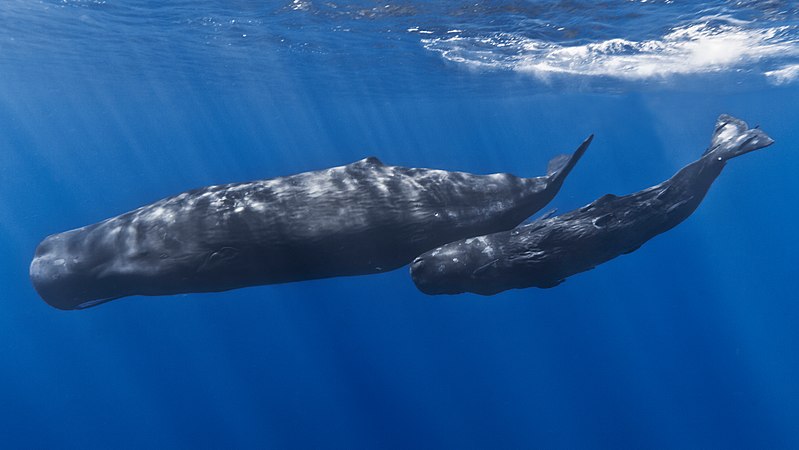Crumb, Voice of the Whale
And now for something completely different. The American composer George Crumb (b. 1929) pushed many of the boundaries in 20th-century avant garde music. But unlike some of his contemporaries, he didn’t do it merely as an experiment or for shock value. That’s not to say that you won’t be surprised by some things in this selection. It is merely to say that when the novelty factor dies down, you are likely to have a musical experience.
Voice of the Whale (1971) is written for three masked players: electric flute, cello, and prepared piano. A “prepared” piano is one that has had some extra items inserted inside, on or between the strings. You can use all sorts of miscellaneous hardware. Limited only by the composer’s imagination, this can create some quite new and striking sounds. Crumb specifies black masks and blue lighting.
The inspiration for Voice of the Whale (Vox Balaenae) came from recordings of “whale songs.” Perhaps you have heard such recordings. The “songs” are beautiful in their way. The following chart may help you as you listen.
| Name of movement | Timing | Examples of instrumentation and technique |
| Vocalise | (0:07) | Sing flute, performer sings into flute while playing |
| Sea Theme | (4:54) | “Aeolian harp” performer strums piano strings |
| Archeozoic | (6:38) | Cello harmonics and chisel on piano strings |
| Proterozoic | (7:55) | Paper clip strums piano strings and sing flute |
| Paleozoic | (10:14) | Harmonic glissando for cello |
| Mesozoic | (11:20) | Glass rod on piano strings |
| Cenozoic | (12:30) | Harmonics called whistle |
| Sea-Nocturne | (15:00) | Antique cymbals |
As with any piece of music that is unfamiliar to you, I suggest listening twice in immediate succession. But if you still have problems figuring this one out, I have one more suggestion. Listen for the whales.




